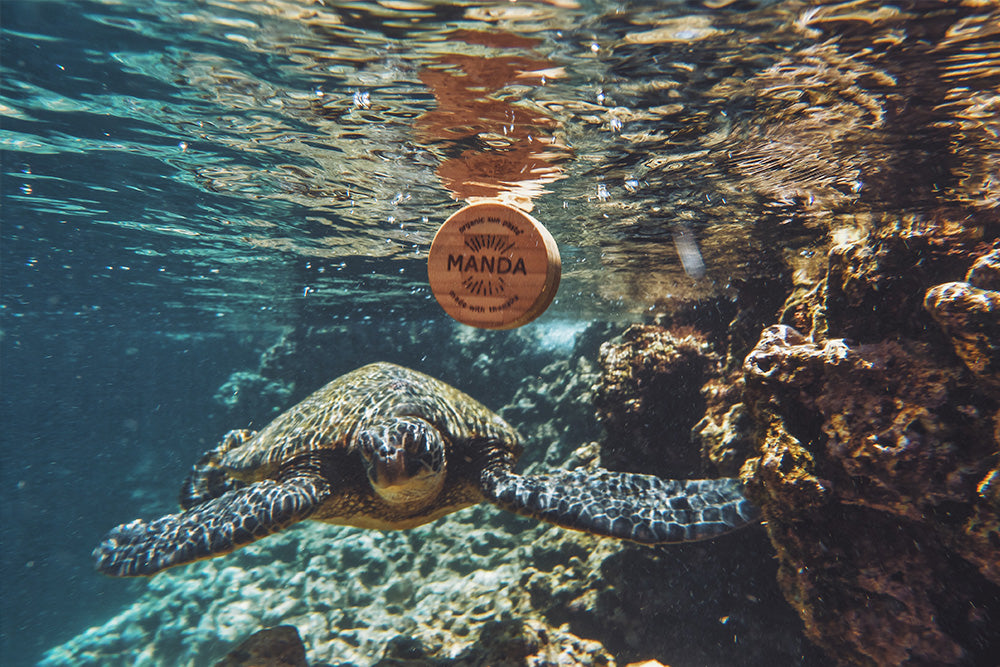The Mysterious Life of Coral Reefs


As explored in our previous post, there’s been a lot of discussion about the impact of sunscreens on coral reefs and, thankfully, some action taken to reduce the harmful effects that oxybenzone and octinoxate are having on our underwater environments. Thanks to Finding Nemo and eye-catching tourism campaigns, most people know that coral reefs exist but how many of us actually understand the coral reef environment? In this article, we wanted to dive into the lesser known lives of coral reefs - what they are, how they come into being, and why they are so important to the health of our planet.
WHAT IS A CORAL REEF?
Where better to look for an answer to this question than BBC’s Blue Planet II series? As David Attenborough explains, coral reefs are “undersea cities, crammed with life… they are complex, infinitely-varied structures providing all kinds of homes for their many residents.”
These cities, though populated by thousands of different animals and plants, rise into being on the back of one animal in particular: reef-building coral. Related to jellyfish and sea anemones, corals have been an oceanic staple for the last 450 million years; existing long before dinosaurs who arrived on the scene roughly 247 million years ago.
Reefs are formed when coral polyps (explored below) build calcium-carbonate skeletons that protect from predators and create structures upon which other coral polyps can attach themselves. By constructing these limestone matrices, the coral is also creating an environment in which many other animals and plants can flourish. Incredibly, although coral reefs only account for less than 1% of the ocean floor, an estimated 25% of marine species call these ecosystems home.
Unsurprisingly, coral reefs are some of the most diverse ecosystems on earth. Scientists estimate that these reefs could house millions of undiscovered organisms and species, in addition to numerous natural compounds that could be used in treatments for illness and disease. For the reefs’ inhabitants, however, this is nothing new. As captured in an episode of Blue Planet II, bottlenose dolphins have been taking advantage of the Gorgonian corals’ antiseptic qualities for some time now; rubbing their bodies against the corals’ fronds to prevent infection and teaching their young to do the same.
HOW ARE CORAL REEFS FORMED?
As mentioned earlier, coral reefs are made up of calcium carbonate structures that are built by hundreds or thousands of coral polyps. As reef-building coral continue this construction, coral polyps inhabit the small “cups” on its surface. Together these coral colonies exist on an ever-expanding structure that itself is built upon the compacted skeleton of old coral from thousands of years ago.
However, coral can’t do all of this on their own- they are but one half of a dynamic duo that carries out reef building. As touched upon in our previous post, corals rely on photosynthetic algae that live inside the polyps to provide them with the energy and nutrients they need for survival. The algae is also responsible for the corals’ color. Together they support and nourish one another, but this partnership isn’t without problems.
When ocean temperatures rise, as they have been doing with unsettling consistency over the past few decades, the algae’s photosynthetic processes begin to accumulate harmful molecules which leak out into the polyps’ cells. In an attempt to avoid any resulting damage, the polyps expel the algae out of their bodies; leaving their colorless skeleton exposed and prone to bleaching. Now, without its major food source present, the coral begins to starve. Unless temperatures rapidly lower (allowing the algae to return) the coral will die and become coated in a layer of seaweed that shuts down the entire ecosystem. In this fashion, reefs can be lost forever.
WHY ARE CORAL REEFS SO IMPORTANT?
Hidden underwater and in predominantly remote locations, it’s easy to overlook the fundamental role that coral reefs play in our day to day lives. Upon closer inspection, however, their financial and environmental importance becomes strikingly apparent.
From an environmental standpoint, coral reefs play a big role in protecting shorelines from coastal storms and erosion. According to a study done by Nature Communications, coral reefs can reduce wave energy by up to 95% and wave height by 84%, providing crucial protection for threats such as tsunamis. As the planet heats up and incidents of erratic weather patterns increase, this protection may become more pivotal than ever before. In addition to providing coastal barriers, parts of coral reefs also act as natural water filtration systems.
Financially speaking, The Natural History Museum estimates that coral reefs provide a global value of roughly $7.5 billion USD annually through fishing and tourism. Indeed, citizens of many developing countries rely on these reefs as an important and economical food source to sustain them.
Beyond their financial and environmental importance, coral reefs also offer the potential for numerous medical breakthroughs. Coral extracts have already been used to develop treatments for heart disease, asthma, cancer and arthritis. In addition to this, the vast biodiversity of coral reefs could also lead to many other advancements in medicine.


